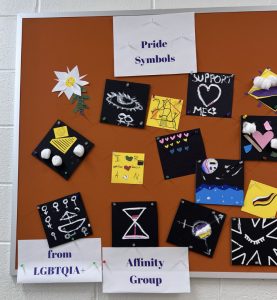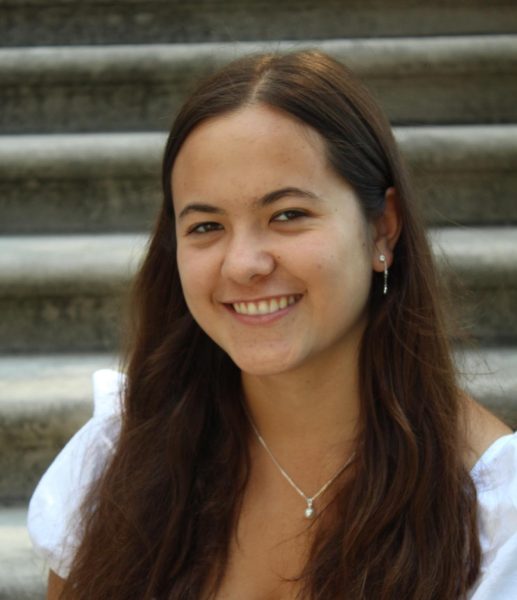The rollout of WIS’s affinity groups has been a lengthy process, but they have begun meeting after almost a year of planning. The process has been a learning experience for students and faculty alike.
The Middle and Upper School affinity groups are: People of Color, White Awareness and Accountability, Touched By Adoption, LGBTQ+ and the recently added Female Identifying group. Each of the groups have met either once or twice, with the highest turnout in the LGBTQ+ group.
Middle School English teacher Sonia Chintha, who has been a major organizer and is facilitating the Middle School People of Color and LGBTQ+ groups, believes they are doing very well, considering it is the first time they are being introduced at WIS. “Each time that we meet, I can see that just a few more kids are coming, which to me is a success,” she said.
Senior Jesse Jackson, a student leader for the Upper School People of Color group, hopes that the groups continue at WIS and hopes to continue taking part in affinity groups in college.
“I really think it’s beneficial for the students,” Jackson said. “Especially for the students who are a minority person of color, who don’t really understand their identity. For them to come together as a group and for them to relate and connect with each other… it’s an impactful experience.”
Initially, Jackson was disappointed by the lower than expected turnout. But he soon realized that the conversations, not the amount of people, made the experience special.
Chintha’s perspective on affinity group attendance has changed from the start of the creation process. At first, she tried to get as many students as possible to be involved in the groups.
“Whoever needs it, will show up that year,” she said. “It doesn’t matter if it’s two or 50, as long as we provide a safe space for students as a school. If students choose to take it, they can choose to take it.”
Some groups, like the Middle School Touched by Adoption group, had no turnout in the initial meeting, signaling that “maybe we don’t have a need, and we thought we did,” according to Chintha.
Upper School English teacher Susan Chung-Fontaine, who is facilitating the Upper School People of Color group, believes there are many factors affecting the low turnout in the Upper School groups, such as the fact that they meet at lunch, when many students have clubs or wish to take a break.
“There’s still some questions around the affinity groups,” Chung-Fontaine said. “There is maybe just a lack of understanding like, what are they? What do they really serve? And what am I getting into?”
To solve this issue, Chung-Fontaine hopes to find ways, like partnering with ISU, to inform the community of the topics that will be discussed ahead of time. Jackson also hopes to improve transparency with students on what the groups are about and when they meet.
“I wish that students understood that the [People] of Color group isn’t a group that’s focused on isolating a certain minority and then highlighting their importance,” he said. “It’s about a safe space or an environment where people can come together.”

In Middle School, eighth grader Eileen Maloney Cunningham has been attending the White Awareness and Accountability group and is finding the meetings beneficial as well.
“The reason I chose to go was because I’d never really thought very much about the fact that I’m white,” Cunningham said. “I just found it interesting to talk with people about that, especially in an International School.”
So far, the group has been focusing on introducing the topics and making participants feel comfortable, according to Cunningham.
“I think we will get into some deep stuff and that it will be, eventually, a safe space to talk about certain things,” she said. “Especially since, honestly, it’s a very, very awkward topic to talk about.”
Cunningham plans to keep attending meetings, though she wishes they were more frequent in order to be more productive. She says another limitation is that not all participants are opening up during discussions.
“I’ve talked to some people and they’re like, ‘oh, yeah, I don’t really open up in them because I feel like [the teachers] are trying really, really hard.’ I think that that might be the one flaw of it,” she said.
The affinity groups meet once a month during extended advisory, which Cunningham thinks is an ideal time, since she isn’t missing much in advisory. Though, some students attend affinity groups purposefully to skip advisory, according to sixth grader Felix Miller.
A potential issue with the affinity groups is that groups meet at the same times. Some students have been forced to choose which meeting to attend, but Miller thinks that overall, the scheduling works out.
“I think it was really smart how they set it up so that the two that are hard to [be a part of] both at are at the same time,” Miller said.
Miller is the middle school student leader for the White Awareness and Accountability group. His role is to meet with the adult facilitators before meetings to plan and give feedback, and answer questions in discussions first. However, Middle School student leaders are not yet completely leading the groups, so they can experience them first.
In the Upper School, adult facilitators and student leaders moderate discussions jointly, according to Jackson. His role is to help students feel comfortable to share.
“I had come with the intention to create a space or a safe environment where students felt welcomed and I really didn’t see race, ethnicity or those dividers as part of it,” he said, since the People of Color spectrum is very broad.
Both Chung-Fontaine and Chintha are open to new affinity groups. Chintha is considering a Middle School Touched By Divorce group. In the Upper School, a group of students initiated the new Female-Identifying group.
Chung-Fontaine is currently an adult facilitator for this group, but says she is open to having some meetings without an adult in the room, so students can feel more comfortable with certain discussions. In the future, she hopes that all the groups will be mostly student-led as well.
Affinity groups are proving to be a learning process for everyone, and this year is really about starting the framework for these groups in the long term, according to Chintha.
“We only have two more meetings [this year],” Chintha said. “So this year, I think it’s just going to be about us gathering as a community and being in a space where all of us are similar or same, and feeling that feeling. And hopefully next year, we launch it at the start and that allows us to actually create the full safe space that we want.”
By Naomi Breuer

































































